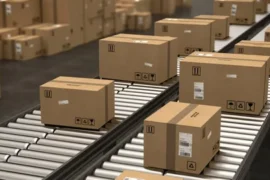Introduction
In the quest for more environmentally friendly agricultural practices, the integration of advanced materials like polymers has become essential. Polymers, both natural and synthetic, offer innovative solutions that enhance the efficiency, productivity, and sustainability of farming practices. These materials contribute significantly to sustainable farming by improving soil health, water management, and crop protection while reducing the environmental footprint of agricultural activities.
In this post, we’ll explore the top ten polymers that are making a substantial impact in sustainable farming. We’ll delve into their unique properties, applications, and benefits, providing a comprehensive guide for farmers, agronomists, and anyone interested in the intersection of agriculture and sustainability.

1. Biodegradable Mulch Films
Biodegradable mulch films are an excellent example of how polymers can contribute to sustainable farming. These films are typically made from biodegradable polymers such as polylactic acid (PLA), polyhydroxyalkanoates (PHA), or starch-based polymers. Unlike traditional plastic mulch, biodegradable mulch films break down naturally, leaving no harmful residues in the soil.
Benefits
- Weed Control: Mulch films suppress weed growth, reducing the need for chemical herbicides.
- Moisture Retention: They help retain soil moisture, reducing the frequency of irrigation.
- Soil Temperature Regulation: These films maintain optimal soil temperatures, promoting healthy plant growth.
- Environmentally Friendly: By degrading into harmless substances, they prevent soil pollution and plastic waste accumulation.
Applications
Biodegradable mulch films are widely used in vegetable farming, horticulture, and vineyards. They are particularly beneficial in organic farming systems where the use of synthetic chemicals is restricted.
2. Superabsorbent Polymers (SAPs)
Superabsorbent polymers (SAPs) are materials that can absorb and retain large amounts of water relative to their own mass. These polymers are primarily used in agriculture to improve soil water retention, especially in arid and semi-arid regions.
Benefits
- Water Conservation: SAPs reduce the need for frequent irrigation by holding water in the soil and releasing it gradually to plant roots.
- Drought Resistance: Crops grown in SAP-treated soils are more resilient to drought conditions.
- Enhanced Plant Growth: By maintaining optimal soil moisture levels, SAPs promote healthier and more robust plant growth.
Applications
SAPs are used in various agricultural applications, including crop cultivation, landscaping, and turf management. They are particularly valuable in areas facing water scarcity, helping to sustain crops during dry periods.
3. Controlled-Release Fertilizers (CRFs)
Controlled-release fertilizers (CRFs) utilize polymer coatings to regulate the release of nutrients over time. This technology ensures that plants receive a steady supply of essential nutrients, minimizing nutrient leaching and environmental contamination.
Benefits
- Improved Nutrient Efficiency: CRFs enhance nutrient use efficiency, reducing the overall amount of fertilizer needed.
- Reduced Environmental Impact: By preventing nutrient runoff, CRFs mitigate water pollution and eutrophication.
- Cost Savings: Farmers can achieve higher yields with fewer fertilizer applications, leading to cost savings in the long run.
Applications
CRFs are used in a wide range of agricultural settings, including row crops, horticulture, and turf management. They are particularly beneficial in regions with heavy rainfall or sandy soils where nutrient leaching is a concern.
4. Biodegradable Plant Pots
Biodegradable plant pots are made from natural polymers such as coir, peat, or compostable plastics. These pots are designed to degrade naturally in the soil, eliminating the need for plastic pots and reducing plastic waste.
Benefits
- Eco-Friendly: Biodegradable pots reduce plastic waste and are made from renewable resources.
- Root Health: These pots promote healthy root development by allowing roots to penetrate the pot walls.
- Convenience: They can be planted directly into the soil, reducing transplant shock and labor costs.
Applications
Biodegradable plant pots are popular in nurseries, home gardening, and large-scale horticulture. They are ideal for growing seedlings and young plants that will later be transplanted into the field.
5. Biodegradable Seed Coatings
Seed coatings made from biodegradable polymers enhance seed performance and protect young seedlings. These coatings can include nutrients, pesticides, or growth stimulants that support early plant development.
Benefits
- Enhanced Germination: Seed coatings improve germination rates by providing a protective layer around the seeds.
- Early Growth Support: Coatings can deliver essential nutrients and protect against pests, promoting early seedling growth.
- Reduced Environmental Impact: Biodegradable coatings break down naturally, leaving no harmful residues.
Applications
Biodegradable seed coatings are used in various crops, including cereals, legumes, and vegetables. They are particularly beneficial in challenging growing conditions where early seedling survival is critical.
6. Polylactic Acid (PLA) Bioplastics
Polylactic acid (PLA) is a biodegradable polymer derived from renewable resources such as corn starch or sugarcane. PLA bioplastics are used in various agricultural applications, including mulch films, plant pots, and packaging.
Benefits
- Renewable Resource: PLA is made from renewable materials, reducing dependence on fossil fuels.
- Biodegradability: PLA products break down naturally, reducing plastic pollution.
- Versatility: PLA can be used in a wide range of agricultural products, enhancing sustainability across multiple areas.
Applications
PLA bioplastics are used in horticulture, packaging for agricultural products, and as components in farming equipment. Their versatility and environmental benefits make them a popular choice in sustainable farming.
7. Polyglycolic Acid (PGA)
Polyglycolic acid (PGA) is a biodegradable polymer with excellent mechanical properties and biodegradability. It is used in various agricultural applications, including biodegradable mulch films and controlled-release systems.
Benefits
- High Strength: PGA has high mechanical strength, making it suitable for demanding agricultural applications.
- Biodegradability: PGA degrades naturally, minimizing environmental impact.
- Water Solubility: PGA can dissolve in water, making it useful for controlled-release applications.
Applications
PGA is used in biodegradable mulch films, seed coatings, and controlled-release fertilizers. Its unique properties make it a valuable material for enhancing sustainability in farming.
8. Polyhydroxyalkanoates (PHA)
Polyhydroxyalkanoates (PHA) are a class of biodegradable polymers produced by microbial fermentation. PHAs are versatile and can be used in various agricultural applications, including mulch films, plant pots, and seed coatings.
Benefits
- Biodegradability: PHAs degrade naturally in the environment, reducing plastic pollution.
- Renewable Production: PHAs are produced from renewable resources, supporting sustainable agricultural practices.
- Versatility: PHAs can be used in a wide range of agricultural products, enhancing sustainability.
Applications
PHAs are used in mulch films, biodegradable plant pots, and seed coatings. Their renewable nature and biodegradability make them a valuable addition to sustainable farming practices.
9. Starch-Based Polymers
Starch-based polymers are biodegradable materials derived from natural starch sources such as corn, potato, or cassava. These polymers are used in various agricultural applications, including mulch films, plant pots, and seed coatings.
Benefits
- Biodegradability: Starch-based polymers break down naturally, reducing environmental impact.
- Renewable Resource: These polymers are made from renewable materials, supporting sustainable farming.
- Versatility: Starch-based polymers can be used in a variety of agricultural products.
Applications
Starch-based polymers are used in biodegradable mulch films, plant pots, and seed coatings. Their environmental benefits and versatility make them an important component of sustainable farming practices.
10. Cellulose-Based Polymers
Cellulose-based polymers are derived from natural cellulose sources such as wood pulp or cotton. These biodegradable polymers are used in various agricultural applications, including mulch films, seed coatings, and plant pots.
Benefits
- Biodegradability: Cellulose-based polymers degrade naturally, reducing plastic pollution.
- Renewable Resource: These polymers are made from renewable materials, supporting sustainable agricultural practices.
- Versatility: Cellulose-based polymers can be used in a wide range of agricultural products.
Applications
Cellulose-based polymers are used in biodegradable mulch films, seed coatings, and plant pots. Their biodegradability and renewable nature make them a valuable addition to sustainable farming practices.
Conclusion
The use of biodegradable and sustainable polymers in agriculture is a game-changer for the farming industry. These materials offer innovative solutions that enhance productivity, reduce environmental impact, and support the principles of sustainable farming. From biodegradable mulch films to controlled-release fertilizers, polymers are helping farmers adopt more sustainable practices that protect our planet for future generations.
As we continue to explore and develop new polymer technologies, the potential for sustainable farming will only grow. We invite you to share your thoughts, experiences, and questions about using polymers in sustainable farming. Leave a comment below and join the conversation on how we can create a more sustainable future for agriculture.






1 Comment
Pingback: Best 10 Environmental Impacts of Biodegradable polymers in Agriculture - greenpolymershub.com